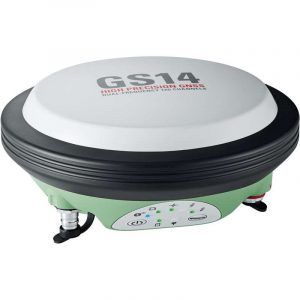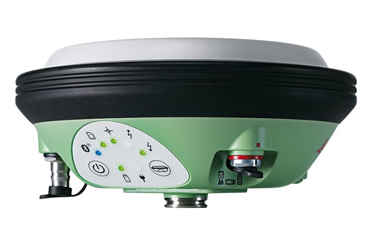 Norcross, GA, USA, December 11, 2012 – Leica Geosystems, Inc., announced the release of the New Leica Viva GS14 GNSS receiver. The GS14 is designed to be the best price performance GNSS receiver in its class. The built-in GSM and UHF radio, internal memory and IP68 protection fully equips a user for nearly any measuring task, providing a reliable, revenue-generating production unit.
Norcross, GA, USA, December 11, 2012 – Leica Geosystems, Inc., announced the release of the New Leica Viva GS14 GNSS receiver. The GS14 is designed to be the best price performance GNSS receiver in its class. The built-in GSM and UHF radio, internal memory and IP68 protection fully equips a user for nearly any measuring task, providing a reliable, revenue-generating production unit.
When combined with the Leica Viva GNSS RTK, the GS14 creates a tightly integrated GNSS system ensuring the highest degree of flexibility, quality and reliability.
Flexibility and Comfort in the Field
The compact Leica Viva GS14 offers comfort in the field and a variety of setups and operating options. The Leica Viva GS14 can be used as a light-weight rover and as a base station. The Leica Viva GS14 further enhances the Leica Viva series by offering a complete range of GNSS and total station solutions combining precision with maximum versatility. Users gain speed and efficiency by reducing the number of setups and control points with the unique SmartStation, and the versatile SmartPole allows instant switching between GNSS and TPS with a simple icon tap.
Highest Quality GNSS System
With Leica Viva GS14 customers profit from a robust product they can trust. In many respects, the system exceeds specifications going beyond industrial standards. Moreover, the temperature ranges from -40°C to +65 °C ensures a flawless performance even in most challenging working environments.
Proven, Reliable, and Future Proof System
Leica Viva GS14 uses Leica Geosystems’ leading GNSS technology. With the proven SmartTrack and SmartCheck technology integrated, the Leica Viva GS14 tracks signals with the highest quality and constantly evaluates and verifies the RTK solution to ensure the most reliable RTK positions. Together with the innovative Leica xRTK technology, positions are delivered in difficult GNSS environments. With Leica Geosystems’ advanced Future Proof design customers can be sure that their investment is protected as the Leica Viva GS14 is ready for future satellite signals.
Source : https://amerisurv.com
